Appendix N: The OSR of the first level of Deus Ex
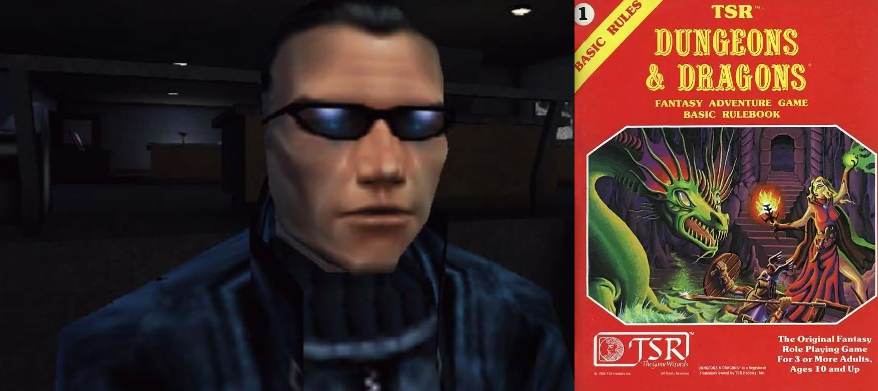
25 years ago a videogame introduced me to sandbox level design. Spoilers ahead.
Deus Ex (2000) is a game that sits within a lineage which extends all the way back to the earlier Ultima Underworld games and continues spiritually until at least Prey (2017). But as this is Appendix N we’ll begin with a longer list of inspirational videogames for me, before we zoom in on just one.
Warhammer: Shadow of the Horned Rat (1995, Mindscape)
Sid Meier’s Civilization II (1996, Microprose)
Fallout (1997, Interplay)
Half-Life (1998, Valve)
System Shock 2 (1999, Irrational Games/Looking Glass Studios)
Deus Ex (2000, Ion Storm)
Baldur’s Gate 2: Shadows of Amn (2000, Bioware)
Left 4 Dead 2 (2009, Valve)
Dishonored (2012, Arkane Studios)
FTL: Faster than Light (2012, Subset Games)
Invisible Inc (2015, Klei Entertainment)
DOOM (2016, id Software)
Return of the Obra Dinn (2018, Lucas Pope)
Disco Elysium (2019, ZA/UM)
Roadwarden (2022, Moral Anxiety Studio)
Now, I didn’t play all of these in their year of release, so what’s important is the context of my experience at the time I first played it. I was obsessed with Half-Life, its expansions and the burgeoning mod scene, but had come into PC gaming via turn-based and real-time strategy games (“look Mum, Civilization II teaches you history!”). I was familiar with the idea of secrets and easter eggs via the Doom/Quake/Duke Nukem shareware releases, but that’s pretty much it.
So this was my first real introduction to multi-route levels and variable approaches to problem solving, and I think there are several reasons why OSR dungeons appeal to me (as a player, GM and designer) today that can be traced back to this game 25 years later.
A Clear Main Goal
Admittedly not “grab a bunch of treasure” as per the classic OSR maxim, but if you strip all the plot away it’s “you see that big statue over there? Get to the top of it” — you do not have to speak to anyone except your brother and you could theoretically speed run/sneak past every single obstacle (it is possible — even without using the prod to stun enemies).
There’s also a secondary objective (rescue someone who, if you choose to arm them, immediately shoots his way out and can’t be killed while doing so) and what might be thought of as a tertiary objective (get a way to solve a puzzle by speaking to someone,
The genius of it is that by scattering all of these goals around AND presenting lots of useful things to find and pick up and use AND lots of enemies to fight/avoid AND lots of information you create a very natural gameplay loop even if you aren’t focused on the goals at all (which I certainly wasn’t the first time I played).
A Looping Map
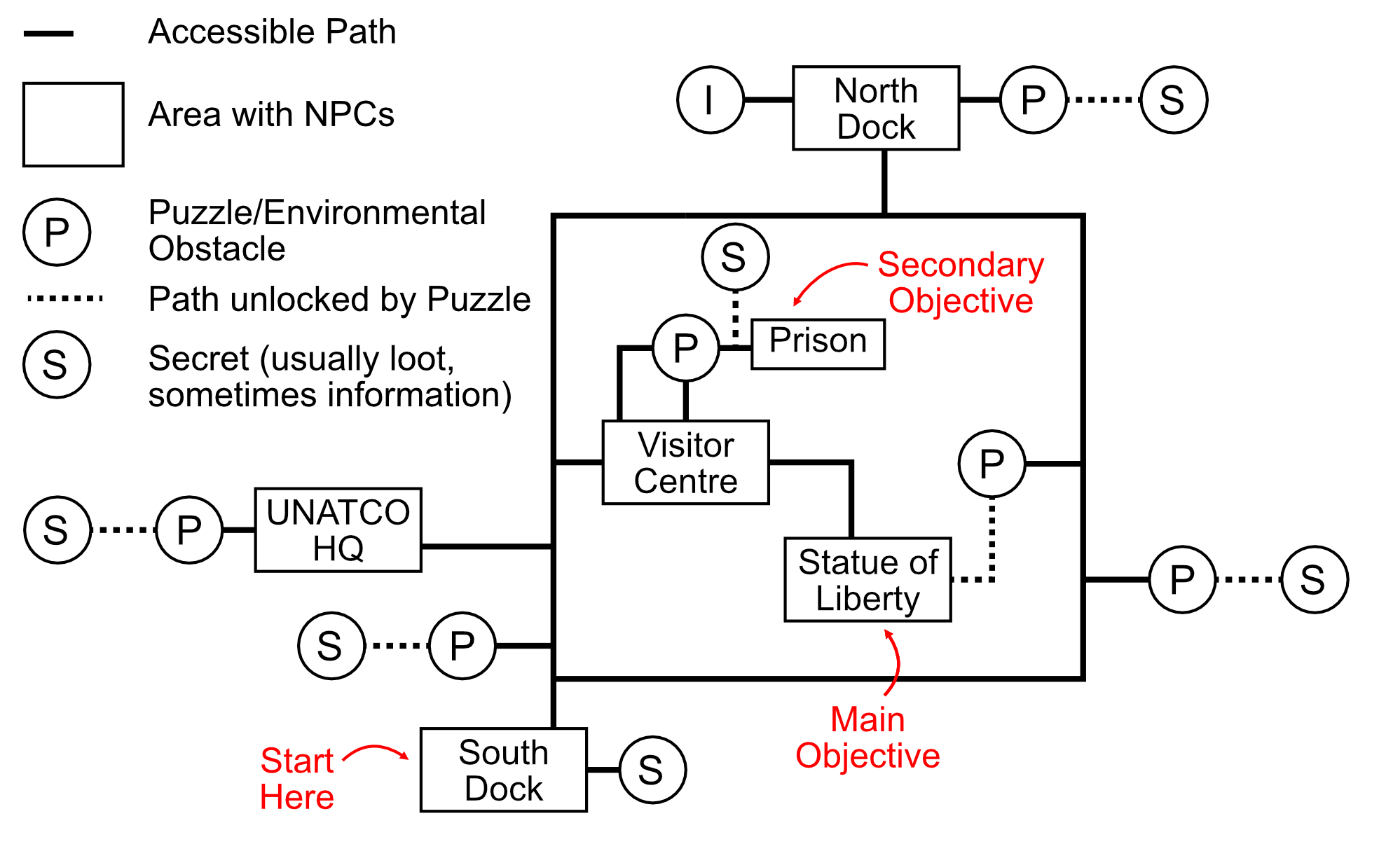
It’s with the level design itself that we really get into the Jaquays of it all — the simplified map above doesn’t even capture how many possible loops there are on the main circle, due to the ability to ‘cut corners’ and the large spaces and low lighting allowing for evasion of enemies rather than being stuck in corridors.
It also feels like a real place, in a way that not all the later levels in the game do (a number of those are also somewhat linear, small or fall into the trap of having multiple parallel routes rather than loops).
You get an in-game map of limited value (an entertainingly low-resolution satellite photo) — this is something more OSR modules should do, a basic clue about the main areas but no secret doors/tunnels and limited detail.
Interaction, Puzzles and Secrets
Three computer terminals to hack (or find the password for), two of which control gun turrets as well as doors. Multiple things to blow up (which don’t just create explosions, there’s also some barrels of toxic gas) which you are also in danger from — crucially these can be moved around, and the noise of setting them off will lure enemies. You’re vulnerable while moving them as well, an important factor worth considering when ruling on player-created traps and ambushes.
The game avoids trapping itself in FPS weapon progression — you can pick up a lot of tools in this level, ranging from pepper spray to a sniper rifle and even a rocket launcher. There’s a lot of crate bashing (thanks Gabe) but at least that makes noise as well. The puzzles seem basic now but didn’t at the time, and the HUD gives a very clear ‘it will take this much resource to get through this obstacle’ — with almost all doors offering a choice of lockpicking/electronic tool or explosives.
The secrets themselves (once you’ve passed the puzzle) do a good job of offering you those tools or upgrades that you can’t get elsewhere. It’s never ‘oh cool, some more ammunition’ (even though that itself is deliberately kept somewhat limited) it’s ‘I didn’t know this kind of grenade was in the game’ or ‘this game has a weapon upgrade system? Amazing!’. You are rewarded for your exploration and puzzle solving with a new way to interact with the game.
Information Everywhere
Clues are a constant feature (note I recommend skipping the opening video that manages to not only spoil some of the plot but also doesn’t really explain anything about the world beyond ‘there’s a plague happening’) but it’s more than that. Deus Ex has probably the best ‘worldbuilding through clues’ of any game ever made. They are typically brief, but written in distinct voices (often characters you’ll never meet) and assemble a desperate world around you from fragments.
Newspapers, books, datacubes, dialogue and computer terminals all combine to form a rich tapestry where you’re rarely reading for more than thirty seconds at a time. Something that the later Deus Ex games miss is that not all the lore is plot relevant — my personal favourite being that around 40% of the way through the game you read about an unrelated news event that is clearly holding the public’s attention far more than anything you’re up to (at least until an event immediately before the final mission, and even that is probably written off as an accident).
Enemies to Defeat/Threaten You
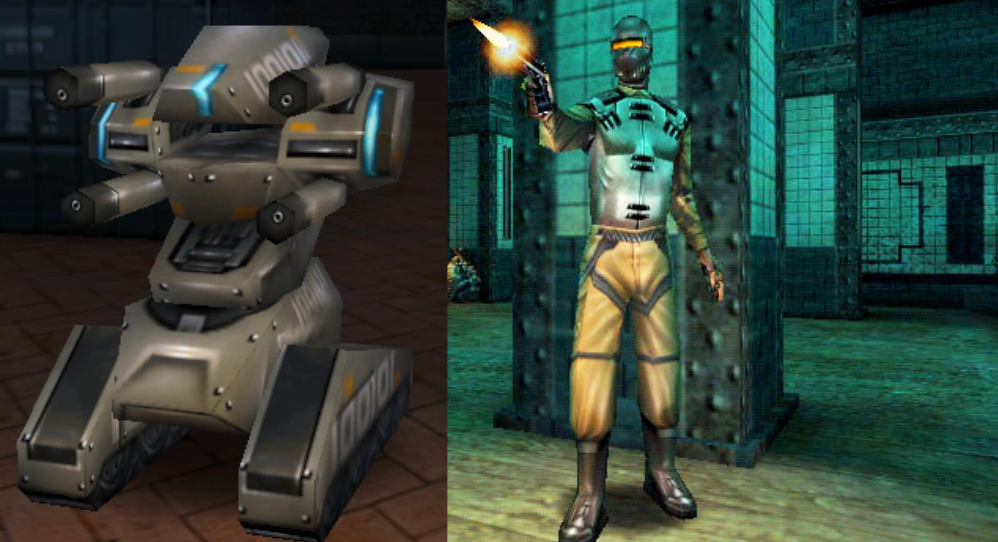
The combat is reasonably deadly, at least on Realistic difficulty and/or if you’re inexperienced (personal dexterity with mouse and keyboard is of course a major factor here). Scoping out the number of enemies you’re taking on in each encounter is important, so that you can prepare. More patrolling enemies would have been nice, as there’s a few too many standing around (even if that does lead to some good worldbuilding conversations you can overhear).
One enemy is only vulnerable to certain weapons (the sentry robot on the most obvious route requires explosives or EMPs to defeat) which dramatically ramps up the difficulty and is again something that could be more widely used. Again, noise is a big consideration here, with the trade-off of melee (silent but risky), pistol (noisy) and tranq dart (silent, but takes time to knock an enemy out) creating interesting choices.
You’re going to want to loot these bodies, but that will almost always only yield ammunition (in this level it’s the only way to get a sniper rifle, later levels sometimes yield useful but not essential keys or grenades on bodies).
Loot/Merchants
The game posits a strange setup where you’re a UN special forces agent who is… paid immediately after each mission by your boss, including occasional performance-based bonuses. There isn’t much hard currency around to pick up but you can hack random ATMs for money. There are people to buy useful things from but they are never signposted as such, creating an organic black market feel to everything.
One interesting quirk here is that you can buy things throughout the game but (almost) never sell them, and there aren’t many ‘plot coupons’. Consequently, inventory management is purely about whatever combination of offensive/defensive/utility objects you want to haul around, based on their slot count (heavy weapons take up far more space than simple pistols).
What’s Missing
This mission doesn’t have usable factions– or rather, there are two factions and your relationship to them (one friendly, one unfriendly) is fixed and cannot be changed. Luring enemies into friendly security bots is an option I suppose, as is changing the allegiance of the gun turrets. There’s also no time pressure or respawning (System Shock and Prey both feature this, in conjunction with a more megadungeon-esque setting rather than discrete levels).
How to Make Huntable Monsters

There are many ways to defeat a monster. Here is a list so you can enthusiastically support any mad idea your players want to try.
Note: I’ve used Cairn 2E as an example since it’s the NSR fantasy system I run the most, but all of this works with a lot of different games.
Note 2: There’s a lot of hyperlinks in this one. It’s a common topic that touches on a lot of other areas.
Consider the Black Wyrm
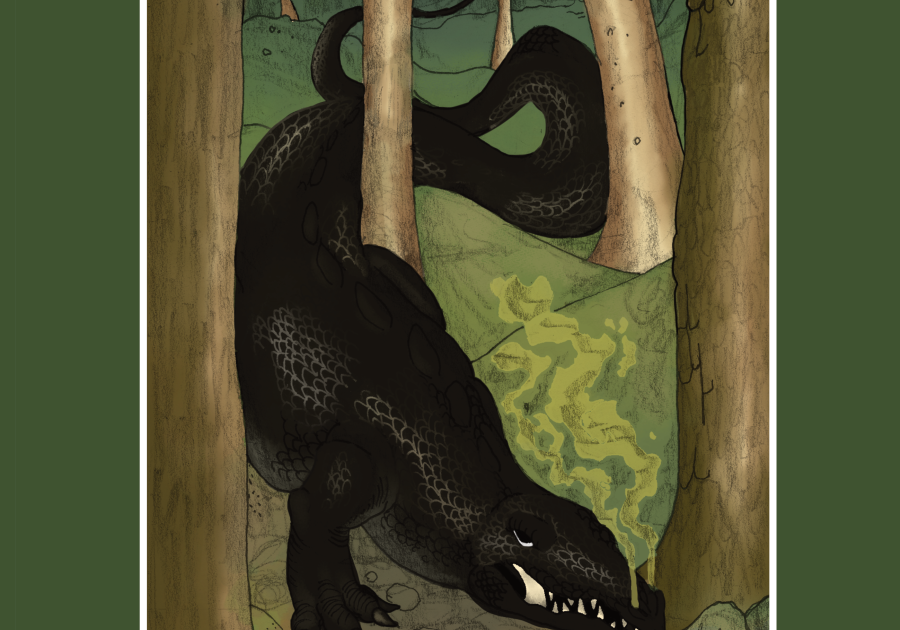
Framing this topic as an OSR/NSR blogpost might seem counterintuitive on the face of it. After all, this is an area of TTRPGs where, famously, we don’t have to kill everything because the XP/growth will come from treasure. Combat is fast, often fought unfairly and/or imbalanced (as war tends to be) so a lot of the time we can Just Use Bears. Moreover, we can:
Play different factions off against each other to avoid dirtying our hands with the messy blood of uncompensated battle.
Treat powerful monsters more as framing devices, environmental hazards or obstacles to be overcome, such as Bonebreaker Tom in The Waking of Willowby Hall (although he still has a stat block and can be killed).
But
It cannot be denied that a cornerstone of D&D and all that has come after is the slaying of Terrible Beasts or Corrupted Men. Even if it’s in pursuit of a bag of gold as a reward or whatever magical artifact corrupted the man (‘I never thought it would imperil MY immortal soul’ etc).
An example of this is the excellent adventure The Black Wyrm of Brandonsford. The titular creature must be defeated (not necessarily killed) and it has a lot of weaknesses… and also a lot of strengths, enough that taking it on without a plan is essentially impossible. The other creatures in the module aren’t as detailed, but that’s the point — this is intended to be a list for creatures that entire quests, entire villages, even entire regions pivot around.
As a checklist, this is intended to be a more specific one than Goblin Punch’s very good Monster Checklist (which you may well want to use to generate the monster in the first instance), but without the complexity of Nested Monster Hit Dice (hence using Cairn 2E as the example system). And of course, any of these can be given layers of complexity by varying how widely available the information is to the players — they should certainly know something even if they need to intuit/investigate further, but you can classify according to Landmark, Hidden, Secret.
So, what might our party try? And what does that mean in terms of the description and mechanics of our monster? I’ve split it into two main categories, then provided an example.
Holistic Solutions
 A cartoon of a dragon AI-generated content may be incorrect.
A cartoon of a dragon AI-generated content may be incorrect.
It’s important to consider all the options, as our monster does not exist in a vacuum and the sandbox nature of OSR/NSR gaming means the scope here is incredibly broad. But look to have answers in the following categories:
Satisfy Desire - What does the monster want, and what will happen when they get it? You might be able to defeat the roaming mummy by returning its stolen canopic jars to its tomb (or making some fakes) or kill the guilty person a revenant is pursuing. Desires can easily be used in a more mundane way as lures for ambushes or bring the monster to a more favourable combat setting (see Environmental Weaknesses below).
It’s fine for a desire to only be satisfied temporarily (a dragon will eventually want to add even more gold to their hoard, but you can still use treasure to buy time to try other things) but it should still have a noticeable impact on the situation at hand.
Use a Resource - I’m going to limit this to ‘resources the GM makes available within scope of the monster/adventure’ because there is an infinite array of ‘the party use the reward they got from the last adventure to defeat the monster in this one’. This can be specific (a sword of slaying X is stashed nearby due to the infrequent appearance of X every Y generations), semi-specific (a nearby dangerous plant that will kill any monster provided it has a corporeal digestive tract) or broad (the local monster hunters guild will do your work for you if you can solve their guild licence recently being revoked).
Protect the Victim - Let’s assume that this is a viable choice i.e. the party could take whatever they learned/obtained and engage the monster in some form of combat… but maybe they can simply direct its attentions elsewhere? A warding circle around the village under threat, an ancient guardian roused from their slumber, persuading the local mayor that they don’t need to fly the traditional red flag of victory when the great bull of terror is nearby. The monster is still out there, but those offering up the reward are satisfied that they can go about their lives peacefully (enough that they pay up at least).
Exploit Weaknesses

Here, we move onto an assumption of violence by the party. This still doesn’t mean it’s to the death, and there’s a certain level of inherent OSR tactics that can be applied to anything — but because we’re dealing with a severe power imbalance, we need specific options so that the players feel they are meaningfully stacking the odds in their favour.
Inherent - At its most basic level, this is “it has eyes, why not shoot it in the eyes?” and can go all the way to “every third attack its ribcage opens up to reveal a green glowing heart”. A strength can also be a weakness — a dragon’s ability to fly make it much more dangerous but restrict this in some way and it becomes more vulnerable. A weakness may well still require a specific tool and/or skill to make use of it (see Smaug + Bard + The Black Arrow).
Note a subcategory of the popular “magical object bound to the soul of the monster” — this still implies violence but might involve travelling somewhere entirely different to the monster’s lair and/or a certain level of investigation.
Behavioural - Here we’re interrogating the monster’s routine in pursuit of its goals/daily life. Most monsters need to sleep for example or have specific periods where they’re weaker. This is likely to be secret information, as it’s in the monster’s interest not to broadcast the knowledge.
This can also include aversions/attractions. The cartoon elephant being afraid of a tiny mouse, or Yogi Bear wanting a picnic basket – these are quirks that add character and are something a resourceful party can use to their advantage.
Environmental - Jaws is a lot less threatening if you can somehow get him 100ft out of the water. 5e notably has ‘lair actions’ which are meant to drive dramatic lair-based encounters but also encourage lair destruction or luring from lairs to somewhere else. This can elevate the simple ambush into something more complex — combat as war means channelling Sun Tzu to fight on terrain that suits you and probably building some traps as well. Just hiding and benefiting from surprise isn’t necessarily enough, mechanically speaking, against monsters in this category.
An Example
First, we write some general fiction about the monster, why it’s a threat and who is asking the party to take care of it.
Note, we can assume all of this is Landmark (told to the party when they arrive in the area) or at most Hidden (they get it from asking in the tavern for stories, talking to survivors of attacks etc).
The Towering Snatcher of the Beanstalk Forest - Once there were four of them; Fee, Fi, Fo and Fum. They had a farm with many large beasts, in keeping with their tremendous size. Stories tell of four giant brides for four giant brothers.
Now only Fum is left.
He farms no longer. Instead, he prowls the forest with a grace that belies his twelve-foot height and muscular body. He seeks meat and does not care if it is human or animal, only that it is fresh. Into the sack it goes.
He crafted a coat of bone to protect against attackers, but there are fewer of those now, since so many have been struck down by his axe. The inhabitants of Jackbury fear the night, when a crash of splintering timber means a barn (or worse, a home) has been struck.
Fum must be stopped. The villagers will pay in coin and vacant farms. There are several of those available now.
Then, we turn it into a meaningful stat block, in this case based on the Cairn 2E Warden’s Guide:
Fum - 8 HP, 2 Armour, 16 STR, 12 DEX, 12 WIL, Stomping Feet (d8), Huge Iron Axe (d10)
A brooding, bitter woodland hunter. Armour made of the bones of his victims.
Stalks targets at night carrying his axe and sack before inflicting brutal violence.
Critical Damage: Target is thrown into the sack, to be eaten later that night.
And finally, how does it stack up against the checklist above? What do we add to change or add?
Satisfy Desire - It’s unlikely the party will feel too much sympathy for Fum, but there’s a whole tragic thread for them to pull on here that the GM can put more effort into the players respond to it. Playing giant matchmaker is a nice change from stabbing things and it has the option of making a lure by building a literal strawman/woman of a sexy giant.
Nothing more required for now, but we could add some additional hidden or secret information with greater detail about Fum’s backstory and/or the wider giant community. This might include directions to a giant village, at which point the challenge becomes persuading Fum that it’s real and that he should go there.
Use a Resource — We might define the Village of Jackbury as a resource but it feels like if forming an angry mob to take on Fum had a chance of working they would have tried that by now. We also don’t have much supernatural or magical at play here — Fum’s just a big hungry guy, so let’s add:
To the West (away from the Beanstalk Forest) there is a smoking hole in the ground. This is all that remains of an ancient evil temple, where worshippers would sacrifice victims by burning a special, magical incense that fills a whole room with smoke and removes breathable air.
This could be an entire dungeon or simply a puzzle to extract unburned incense from a hazardous environment. It’s a useful magic item, but it can’t readily be used in a pitched battle, so we can also add.
Fum has a log cabin deep in the forest. It is all that remains of his family farm. Although on a larger scale, it is not really that different from the villager’s homes — aside from the large cooking pot and pile of bones in a midden outside.
This gives us a closed space where the item could be used — although the party could easily lure him elsewhere.
Protect the Victim - We’ve already added something magical, so let’s not introduce a ‘Ward of Giant Protection’. Something Fum is scared of is a possibility, but there isn’t anything obvious in the fiction for that. Let’s try something else:
Hilda Brennigan is campaigning to be elected leader of Jackbury. Her proposal is simple, the entire village packs up and moves South — paying the party for protection along the way if necessary.
This gives us a way to completely flip the quest on its head. Whether the party are onboard will probably depend on how sympathetic Hilda is – a cautious, defeated widow? Or a wild-eyed populist?
Inherent Weaknesses - Since Fum is a big human, I don’t think there’s much to add here — his biology will be familiar to the players. They might go for the eyes or the Achilles tendon. Similarly his prodigious appetite is inherent, but specific ways to utilise it fall more into behaviour (see below).
Behavioural Weaknesses - A bone coat sounds awfully awkward to sleep in. And I’ll draw from reality when it comes to eating a large meal:
Those that are able to observe Fum in his home will see his post-hunt routine is always the same. First, he removes his bone coat before cooking (though his axe remains on his back). Then, after boiling up his most recent victims and eating them, he falls into a deep sleep.
If we want to make it harder for the players, we can also add a pet or noise trap here — Fum isn’t stupid after all. We also have “food as a lure” being an obvious option, but since it has to be meat the party will either need to persuade some villagers to give up valuable animals or go hunting themselves.
Environmental Weaknesses - All of Fum’s attacks are melee, giving the option for some classic homo sapien vs. mammoth tactics.
To the South, the banks of the River Bean form a thick marsh. Deep enough to drown a human, and severely slow a taller creature like Fum. The villagers say a family lives here, and has built a series of log bridges (which would surely snap under Fum’s weight) to navigate via secret paths. But they are insular and do not trust the villagers, let alone outsiders like the party members…
And that’s it. By looking at a simple situation we’ve already fleshed out the wider world and made it more gameable as well — you can then add in other opportunities and places to raid (perhaps whilst having to watch out for Fum in the forest, or not having much in the way of supplies because Jackbury is so desperate).
I Ran: Brackish (Using Mothership)
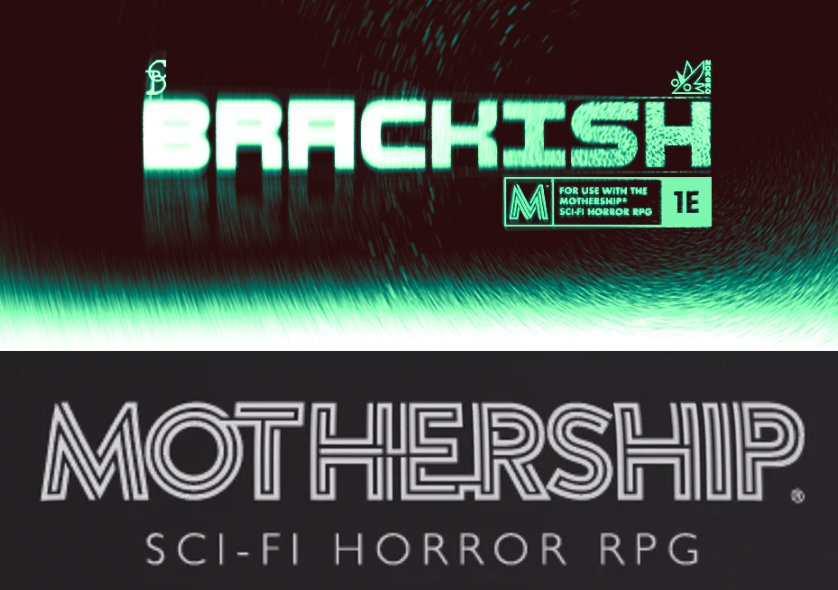
Watery graves, inspiration from an iconic indie videogame *and* an accurate representation of water pumps? Read on to find out what I thought of this investigative Mothership module.
What is this thing?
Brackish is a third party module for Mothership, written, edited, illustrated and laid out by Norgad with co-writing and editing credit to C. Bell. The PCs are given a job by Di-Nobra Investigative Services to determine the status and location of every member of a coastal observation laboratory… which sent out an automatic distress signal three weeks ago and has since been silent.
There are some very specific requirements for obtaining the relevant information to your employer’s satisfaction, which I’ll get to later. Needless to say, heavy spoilers from this point onwards.
I backed Brackish on Backerkit (try saying that out loud) as a pdf after a positive experience running Norgad’s previous mothership module Dead Weight, which I had discovered via Idle Cartulary’s Bathtub Review (Nova has also covered Brackish here). Dead Weight is a great one-shot and played well at my table, leaning heavily on just how hazardous outer space is in a way that surprisingly few Mothership modules do. Consequently, I was excited to run Brackish for two sessions of 3-4 hours each (including some character generation in both sessions, because we had 3 players for session 1 and 4 for session 2). This was a campaign opener, so aside from some slight changes to the equipment loadout generation, it wasn’t really impacted by any of the house rules I wrote about last month - although we were playing with a voidborn and a biologic.
The Setup
Brackish makes it clear that you are here to investigate and obtain a complete set of information — there’s no single murderer or creature to identify, no root cause to determine, you must instead find out what happened to every single member of the 11-strong crew of Lab 46B. Failure to ID even one of them imposes a 25% pay cut, and in practice the deductive puzzle-solving meant my players jumped from 6/11 to 10/11 pretty rapidly. This did then spark a conversation about whether it was better to cut and run, so I was pleased to see a bonus included in the job description to keep the crew interested.
The module further underlines this premise by giving you… a digital camera. Specifically tamper-proof and waterproof, with a long focus/exposure time of 10 seconds (aka one combat round) this deliberately awkward artifact is a perfect piece of retro Mothership clunky tech. There’s also a printable handout for the players to fill in, representing them tagging the photos they are contractually obligated to take of the evidence to support their claims.
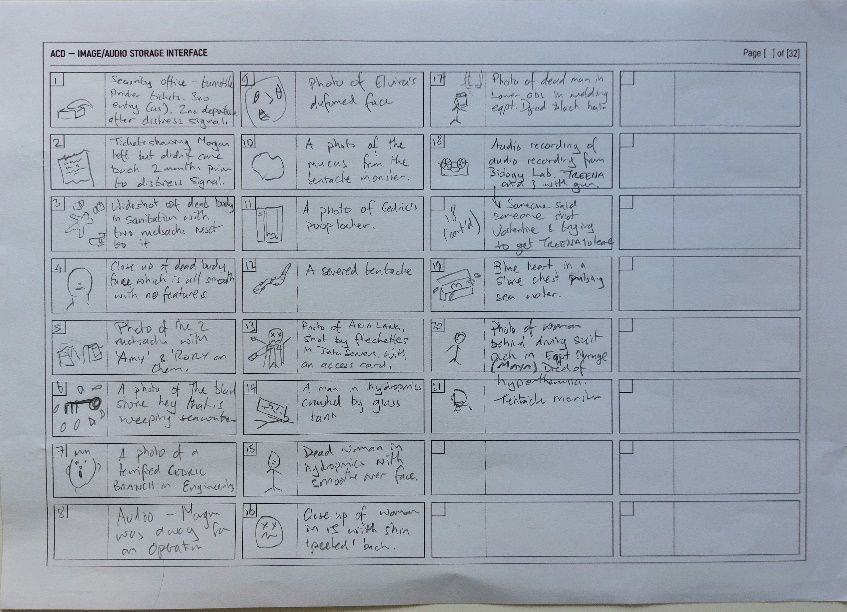
I think this succeeds on theme and engagement more than it does emergent gameplay — although I appreciate that if the camera holder dies there’s potentially some interesting manoeuvres to recover what is essentially your paycheck. But that’s not really a criticism, because that flavour and physicality? It keeps your players focused. A literal list of evidence to fill in (alongside some basic map and crew info to aid deductions from the start) really helps the players avoid distractions and feel like they’re making progress.
Now, you may be thinking you’ve seen the concept of applying logic and observation to deduce the fate of a list of people in a watery environment before…
The Inspiration and the Mystery

I won’t be spoiling Return of the Obra Dinn (go play it if you haven’t already) other than to reassure readers that while the premise is the same, Brackish isn’t copying it. If you’ve played it, you will still very much enjoy Brackish — you’ll simply have sharpened your deductive skills to use at the table. One notable difference is youu don’t get any “special tools” to help you, and all the information is (mostly) apparent with some basic interaction — but there’s some good use of ‘bonus knowledge’ tagged to individual skills to make it easier for Wardens to rule on.
In play, this creates a need for the crew to visit almost every room in the complex (14 in total). I think you could do it with only 11, but surely every crew is going to want to explore (loot) closed storage rooms? The clues are a good mixture of obvious and obscure — and all the while dead bodies drive saves/stress and information about the threat (see below) while others imply relationships and locations that will need to be reinforced with further investigation. Moreover, they all make this place feel real and lived in — the diverse flotsam (narrator: hey that’s the name of the monster) of isolated peoples’ lives.
This is still NSR gameplay, so the more long-winded clues (a letter from an NPC to their parents for example) can be handwaved a little by Warden who wants to keep the pace moving. That means it all hangs together, justifying the complexity and two session length without overwhelming the players (a risk if the location or mystery were any larger).
One criticism I have is that the sole survivor (who my players were monstrously unsympathetic to) could do with some more guidelines. We’re told Cedric “is glad to offer any information he can” — but the Warden has to perform their own deduction to infer what he knows. Similarly, my players got somewhat distracted by the fact that one of the NPCs was receiving offsite medical treatment when all of this went down — surely, they reasoned, their employer would know about that? Or they would have emerged in the last 3 weeks in-game? Thus, I had to invent it being unapproved time spent in a medpod following an injury that could imperil various other peoples’ bonuses.
Environment and Layout

The layout is neat, with each floor of the lab given its own two page spread based on the room order in the map. As seen in the photo above, it worked especially well with my own preferred way of running home printed modules.
Paired with some solid writing on the room descriptions (especially the brief ‘first impressions’ italics), this is easy to communicate to your players. A little more information on the properties of the various barriers would have been useful — doors are presumably watertight (but does the backup power affect their ability to open/close?), each ladder presumably has a hatch (but only some of the rooms mention them) and the security turnstile should emphasise that it blocks entry rather than simply being described as full-height. The module start is also somewhat linear with only one entrance and then three rooms in a row, but I’m much more willing to forgive that in a horror game than a more traditional dungeoncrawler.
There’s some nice environmental interaction here too, with security monitors near the start giving clues about future rooms, and a flooding/emptying cycle with a pump and sensor that made this former boiler feed water system designer very happy. What really elevates them is the thematic link with the supernatural elements at play. The pumping mimics the heart-like pulse of seawater from the mysterious heart in the chest, while the cameras and screens evoke the mirrors and reflections by which Flotsam traverses the facility.
I found the effect of the flooding is more to confuse and disorient the players rather than put characters in serious danger, however it does have an entertaining interaction with the only monster in play here…
The Threat
Flotsam is built gameplay first. And that’s a good thing. This transformed diver (complete with tattered wetsuit and a visor that turns out to be polished skin, leading my players to use the unfortunate term ‘flesh helmet’ to describe its head) is designed for stalking and pressure while the crew complete their investigation. As such, Wardens are given plenty to work with, to the point that you can derive a checklist of good Mothership creature design:
A melee attack that does something damaging AND horrific
A weaker ranged attack that wears you down and has a good chance to shred armour
Armour that improves as it takes damage
A list of tactics and behaviour (based partly on response to damage)
A movement mechanism (it can watch from reflective surfaces, and enter/exit them if they’re a larger surface area than itself)
This last one could do with a bit more detail, perhaps a list of common reflective surfaces and whether they are/aren’t suitable for movement. The hints that the doors of data servers are “mirror-like” are useful, but a simple clarification on whether water must be undisturbed to move through might be handy. Likewise, some ‘creepy places to watch from’ (I was quite proud of coming up with the screen of the camera itself).
There’s also a heart in a box that Flotsam, and potentially anyone that sees the heart, has to protect, with a key elsewhere. I would suggest having Flotsam actively want to recover the key and open the box to look upon the heart, as this made for a good climax in play; both exposing the players to the heart’s effect and giving them a chance of damaging it with the box open.
All of this doesn’t have a huge amount of connection or straightforward theming — and the players have no real means to deduce what Flotsam can do or wants except for its two types of attack. But as written, it really does work in play, and the unknown/inexplicable… well it is a horror game after all. Not everything needs to have a logical explanation. And you need the fear and pressure for what could otherwise be a slow, methodical investigation.
Conclusions
You’ll note I’ve spoken about layout and not art, and that’s because aside from a single image of Flotsam this module is essentially art free. A couple of images, maybe covering one of the first two rooms and then one of the ‘bloodbaths’ later on with transformed bodies could have provided something to show the players. Ultimately, it’s a credit to the writing and design that they’re a nice to have, rather than a necessity.
This is the best investigation-based Mothership module I’ve read or run, and one of the best two-shots overall. The authors know what they’re doing, and I’m keen to see any forthcoming Mothership month projects. If you have a table who can do two sessions with not too much of a time gap between them, and they want something a little more cerebral, you’ll have a great time with this.
Tumbling Down the Rabbit Hole: The Case for Pitcher Plant Dungeon Entrances
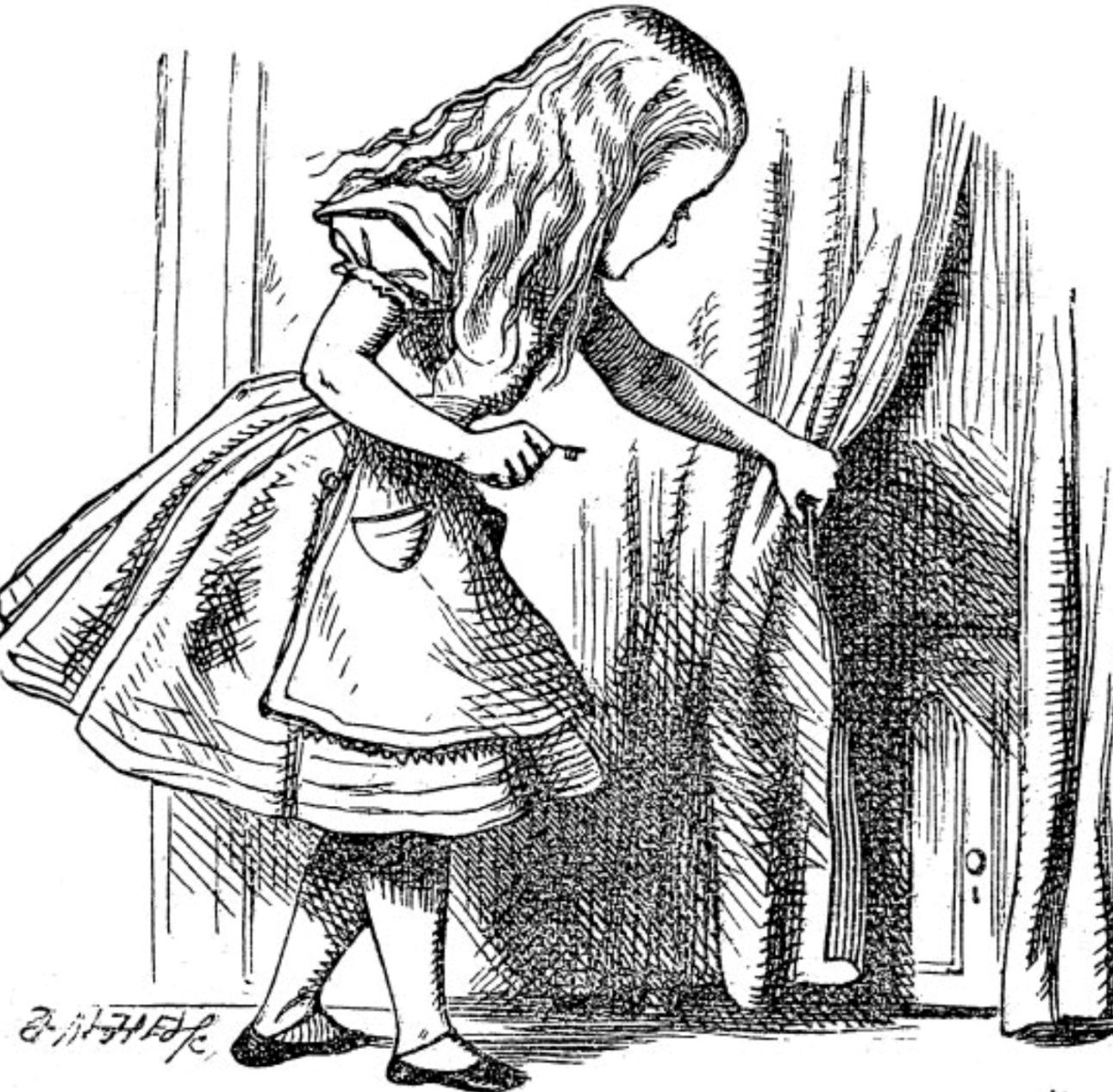
Back in February, a call went out via Prismatic Wasteland for hole blogs: blogs about holes. This post is one that I’ve had in the back of my mind for a while, and it felt like a natural fit.
Has this ever happened to you?
Ahem, let me make sure the intonation is correct:
[Infomercial Voiceover] Has *this* ever happened to *you*?
GM: You are deep within the bowels of The Dark Keep, loaded with stolen treasures. The blood of the kobolds is soaking into your clothing and the very structure shakes in response to your intrusion.
Player 1: Yeah I think that’s it for this delve.
Player 2: Definitely, luck has been on our side so far, let’s not push it.
Player 3: Oh also that means I might make the 9:30 bus! We turn back.
GM: Well, you cut most of the trip wires, the kobolds are dead, your rope is still in place at the cliff and you found the door that bypasses the red beam emanating from The Statue of Despair so… we can probably just reduce this down to a couple of rolls or even handwave it.
You can feel the tension evaporating when moments like this happen, and it can easily spiral to “cut to: the town square”. There is no concern of becoming trapped, lost, or overcome because, well, you probably won’t be.
One thing I want to make clear — my proposal in this post is not something that every dungeon, nor every session, should aim to do. In the example above, the players are being rewarded (perhaps with an earlier bus ride home) for their interaction, risk-taking and problem-solving. That’s a good thing! Moreover, a well-developed wilderness can present some risk, even if the dungeon is easy to get out of.
But I’d like to make this scenario less automatic and less common. To ratchet up the tension and especially to give one shots a bit of drama at the end. To create situations that may, entirely organically, swing the session or even the campaign in a different direction.
Consider the Pitcher Plant
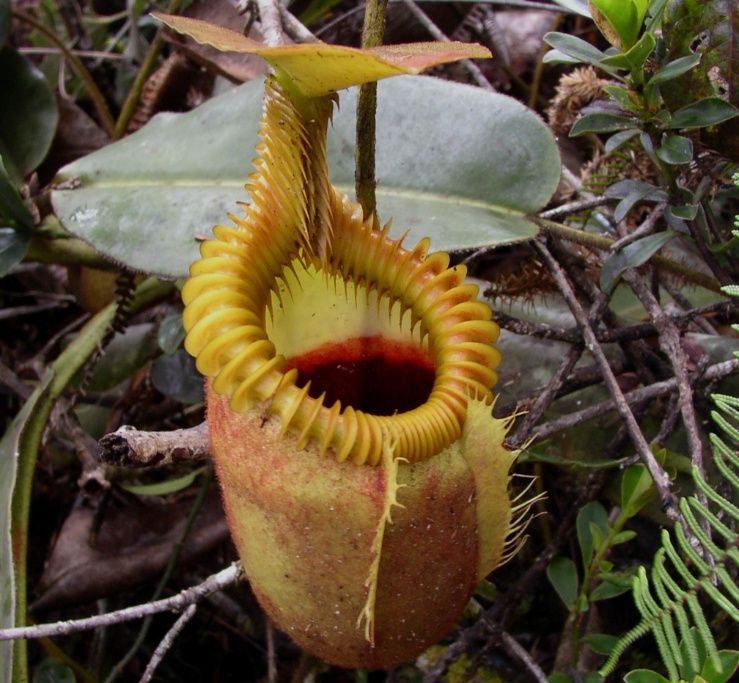
For anyone that doesn’t know, a pitcher plant covers a wide range of species that attract insects (via nectar, scent, pigmentation etc), trap them in a bowl-shaped leaf (via a slippery surface, downward pointing hairs etc) and then drown and digest them in an enzyme-rich liquid at the bottom of the bowl.
Thus, the lure is any OSR dungeon with its treasure and magic, but the trap is that once inside it will require the usual risk/time/a smart plan to extricate yourself. And all the while, the dungeon is digesting you (probably a metaphor. Probably.) because you’re lower on resources/HP, burdened with loot and have attracted unwanted attention.
What Defines this Kind of Dungeon Entrance?
A pitcher plant dungeon entrance is simply one that takes more resources to exit than enter. Resources in this context are a broad spectrum — it might mean more time, more equipment… it might be a greater risk of harm/combat (or more severe consequences of that risk). It might even mean you need to find a magic key in the dungeon to get out at all!
Good practice is to telegraph your pitcher plants. Competent adventurers would note the risk of a descent into a dark mineshaft after all. For more obscure/magical pitcher plants, build it into the rumours around the location. What did the sole survivor of the last expedition whisper in their dying breath?
You’ll also need to define your pitcher plants because we anticipate an experienced group of players will want to interrogate them to some degree. Approaching one with a plan and specific equipment isn’t a bad thing, and the GM can still threaten this approach. Are an intelligent group of wandering monsters smart enough to remove door wedge? Would the rope be taken some inhabitants who lack the ability to make it themselves?
Some Examples
Roll 1d10 on the table below:
The hole is incredibly deep, although you do at least fall slowly. The section with the floating clocks is strange, and reminds you that it will be time consuming to climb back up.
A sleeping, chained sentinel. When you pass them, they awaken and remember your face.
The goblin town charges a low price for entry into the caverns beneath, and a much steeper toll on anyone seeking to leave.
This mud pit is slippery, really slippery. Hopefully just with water and not saliva.
Just a big heavy door that swings shut behind you. Maybe there’s a key, a lever, or a big strong guy somewhere inside.
The bridge just bears your weight if you go one at a time. If you return laden with treasure and in a hurry that might no longer be true.
The cave entrance on the beach isn’t a problem if you enter it at low tide. High tide is a different story.
The forest animals are small and harmless this close to town. That is of course unless you’ve been inside the forbidden temple. The squirrels will be waiting when you emerge.
The darkness of the maze can be burned away by a bonfire set at the entrance. On your way back you will need to keep hold of some torches.
The door is tiny, but a nearby potion renders you a suitable size to enter. Of course, once it wears off, you’ll need to find some more to get back through.
But Why?

When making a case like this, it is useful to consider the opposite approach and play the Devil’s Advocate. The image above is the videogame Diablo’s Scroll of Town Portal — the ultimate “we are not interested in the return journey” development decision that conjures a teleport back to the safety of the town.
Why does it exist? I would posit that it’s because the meat of Diablo is in the hack and slash of combat, and you’re aiming to clear a lot of levels of their inhabitants. You still want some sort of player decision making/inventory management, because you are still a hero venturing forth (a Diablo tower defence game where the monsters come to you would not be as exciting). But, all these things are not what we play OSR for – dungeons are typically not cleared, expeditions are carefully organised and magic seldom offers such convenient shortcuts (or if it does, it comes at a price).
But there is something else pitcher plants aim to encourage, in addition to maintaining tension…
The Only Way Out is Through

For all that the Mines of Moria might be considered the Ur-Dungeoncrawl, we actually see remarkably little of the tension that drives that section of the novel in play. The Fellowship are using Moria as a route to get somewhere and thus their exploration is driven by a need to get through and out, but the Watcher in the Water means they can’t turn back even as they wanted to. This in turn adds extra drama from the Balrog’s pursuit of them — they know The Bridge of Khazad-Dum is ahead, but they do not know its condition, only that they must use it.
All of this has tremendous scope for application to larger dungeons, leaving aside the obvious “the only way to bypass impassable terrain above is via the dungeon beneath”. A pitcher plant dungeon can push you towards an alternative exit with potential for interesting gameplay:
Interrogating inhabitants for other routes out, or trying to interpret clues like maps and keys.
Applying OSR problem solving by following underground rivers or fresh air.
Weighing up the daylight in the distance (destination unknown) vs. the known danger behind.
Seeing more dungeon rooms because you know you can’t go back and must push on or perish.
Finding yourself in an unknown wilderness hex, loaded with treasure but trying to use landmarks to determine your location and route to safety.
So go forth and set up your pitcher plants — your players will remember them or the journey they provoke.
Mothership Campaign Framework: The Anti-Carousing Table
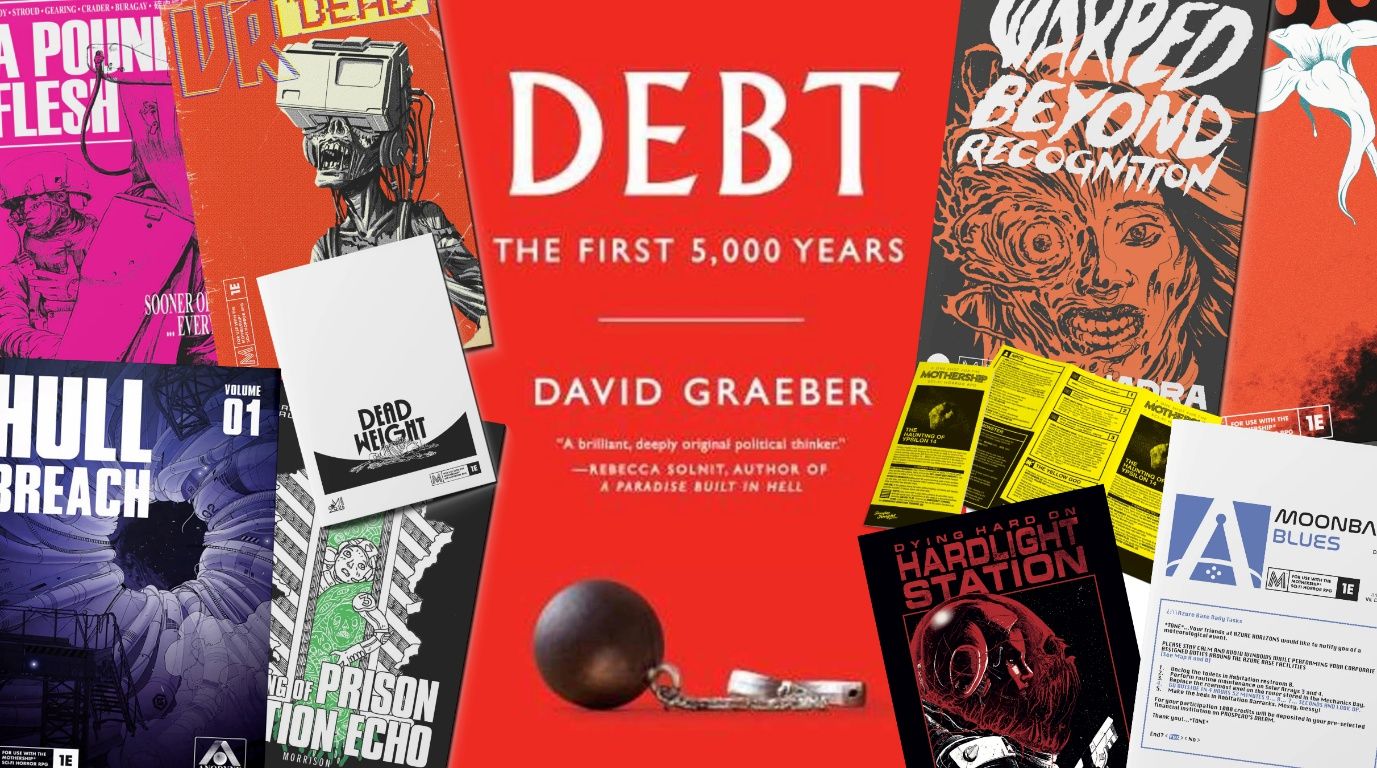
I have many pamphlets but I must campaign: A Mothership table story
Problem Statement
Mothership one-shots are a lot of fun! (enough to make me write a blog post about running them)
…but certain game mechanics (stress, conditions, skill improvements) only play out over multiple modules.
…and people want their characters (including some new classes I’m playtesting) to have arcs that emerge and develop over multiple evenings and a range of scenarios.
…but Mothership doesn’t fit with a typical zero to hero journey. It is a downward curve (or some sort of… Gradient Descent) that may very well end in death.

Most Mothership modules cover one or two sessions and are framed as a job taken on by the PCs. There are of course exceptions — if your campaign is based around larger works like Desert Moon of Karth, Gradient Descent etc then you don’t need this blogpost. Likewise, if you’re carefully building a world of custom content and letting your player’s choices take you in interesting directions then you won’t benefit from any shortcuts.
But if, like me, you have a drawer stuffed full of tri-folds and don’t have the time to write a module every week then you’ll have noticed that the crew are typically either:
a) working a mundane job when something unexpected occurs
b) employed to perform a task telegraphed as dangerous
We can list some example modules for these categories:
a) Ypsilon 14, Screaming on the Alexis, Decagone, Dead Weight, Terminal Delays
b) Another Bug Hunt, Year of the Rat, Iron Tomb, Piece by Piece, Brackish
This is in no way a dig at the system — these two categories are
after all the premise of Alien and Aliens respectively! But it does
present difficulties for constructing a campaign; surviving characters
may struggle to find a motivation to take on another dangerous job,
while a string of unfortunate encounters starts to feel
implausible.
User Requirement Specification
We want a structure that allows characters the chance to improve and even win but more often leaves them desperate.
Characters should have in-game time to lick their wounds, buy equipment and at least slightly improve their skills/saves.
Trends towards keeping/leaving them in poverty, rather than letting them accumulate capital.
Has a chance to cause them more problems. Or at least spark some narrative discussion at the table.
 A movie poster with a group of men AI-generated content may be incorrect.
A movie poster with a group of men AI-generated content may be incorrect.
What do the Rules say?
Tucked away on P.53 of the Warden’s Operation Manual, is a suggestion to take 1d10 months between modules, something I missed on my first campaign. This matches well with the rules for skill advancement (2-6 years), especially if we give players the option to go longer until their next module if they’re flush with cash and not (yet) desperate. The section on shore leave (P.39 of the PSG) also includes a handy example of play wherein the Warden is free to offer it at a range of price points in a single location if they think it’s reasonable.
In other words, there’s already a gameplay loop in the published material. Module > Spend Money Recovering/Improving > Module. Everything in between modules could reasonably be considered a Downtime Action and hence narratively flexible. So let’s see what we can add to this:
Addition 1 — Retirement Goal
Drawing from the tables on P.39 of the PSG and P.51 of the WOM we add the downtime action:
Bank Credits. Any port of B-Class or greater typically allows you to upload your credits to a retirement fund. This makes them safe from most forms of theft, taxation, loss etc but also makes them less efficient to liquidate — take a 50% cut on any credits you remove from the bank.
If you reach your retirement goal (minimum of 1mcr) you have the option to leave the freelancer life behind and start a new character. Congratulations! You have won Mothership™, at least until another player beats your high score/retirement lifestyle…
This gives the players a simple end goal, but one that is very hard to reach. And it’s made more difficult by the next new element.
Addition 2 — The Anti-Carousing Table
In the typical OSR gameplay loop, a carousing table represents the characters spending/wasting the vast sums of gold they’ve appropriated in their latest delve. Tasteless statues, drinking binges, donations to temples… d4caltrops has a good one here.
But that doesn’t quite fit with Mothership. This is setting that is about the grind, the corporate dystopia and the random events that can leave our once prosperous freelancer in a perilous situation.
If we assume that a PC who has survived a typical Mothership module is, at best, calculating the risk/reward of another one (and more likely avoiding it as long as possible) then there is no question of “wasting” credits. They will be easily spent on shore leave, retirement (see addition 1 above) and skills. We need to add some flavour to downtime and generate a risk of losing more money, but not a guarantee. Remember that not everything has to be strictly financial — stress, wounds and loss of equipment still have cost. Thus, I’ve written a d100 table where most of the results are credit loss or gaining stress. Example entries are given below.
Your typical week to week employment is enough to cover daily expenses, but will not add anything towards retirement or provide any savings. Whenever time (1d10 months) passes, roll d100 to determine what Life Event has happened to your character in this period of time.
04 — If you have a wound, it has healed naturally on its own. You assume this is just good luck and the passage of time, and choose not to check your rations.
16 — You help out a Contractor in a tight spot. Randomly generate them (P.41 PSG) and gain their services for free on the next module.
25 — Your last five packets of Astroids™ are all chocolate and have no crunchy caramel centres. This is the most interesting thing that has happened to you in this time.
33 — You are offered 1d10 x 10kcr for the data and rights to your complete genome.
42 — A random item in your possession is declared contraband and confiscated by the authorities.
57 — You are harassed by reporters and private investigators about a previous job. Increase minimum stress by 1.
61 — You find yourself at a high stakes’ poker game. Too high if you’re honest. Pass a Fear Save or lose 2d10kcr.
78 — Inevitable, unavoidable taxation. Lose 3d10kcr.
80 - The isolation and loneliness cause you to crack. Double your stress then gain 1 additional stress for each wound and/or condition you have.
99 — Following a crash landing, you are trapped for several days before being found. Gain 1 wound and 1d10 stress.
Note that if the crew has the resources, they can choose to let time pass multiple times to advance their skill training (or simply to push their luck on the above table).
But what happens if random costs like shore leave or those in the table above take characters into the red?
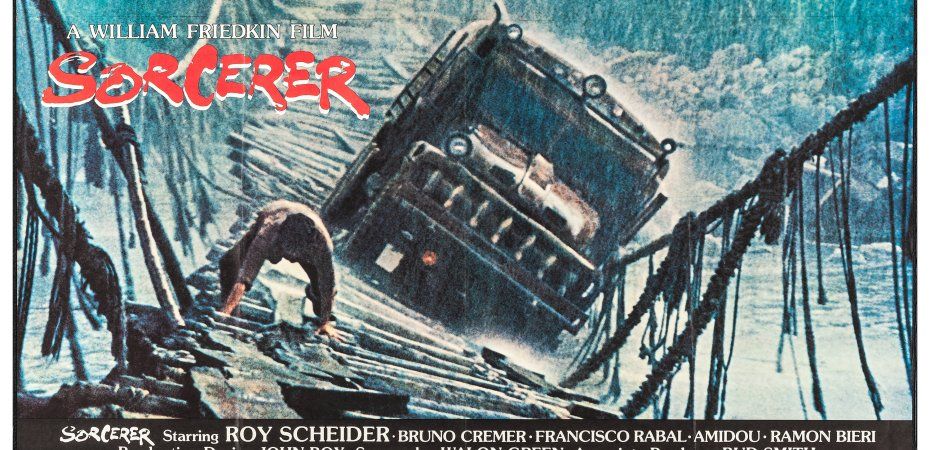
Addition 3 — Debt: The Ultimate Motivation
Mothership already has rules for debt (P.50 WOM) and plenty of people have worked on fleshing this out already (like this blogpost from Jack Shirai). This is just a simple adjustment to keep things moving in an interesting direction while minimising bookkeeping.
Debt is a constant, lurking fear in the world of Mothership. Unlike the other horrors of the rim, it cannot be contained by a steel bulkhead or decontamination protocol. Freelancers talk in whispers of the methods of payment — simple violence is one thing, but then there are the VR customer service roles where every shift lasts a year, live memory extraction for android personality construction, or hosting a portable research bio-reactor between your stomach and kidneys.
If your character ever drops below zero credits, do not record the negative balance. Instead, your character is now filled with purpose to clear the debt and avoid gaining more of it. The Warden will tell you whether a job offers enough to do either of those things, and whether there are any additional objectives that will earn more.
This may lead to situations where characters have secret objectives, benefit from the deaths of other player characters or generally take more extreme risks. As such, it should be discussed out of character via any safety tools/Session 0 being used at the table.
Wardens — remember you can always hand a player a blank scrap of paper with “Secret Objective” written on it if you don’t have any specific ideas. Suspicion from the other players will likely produce something interesting.
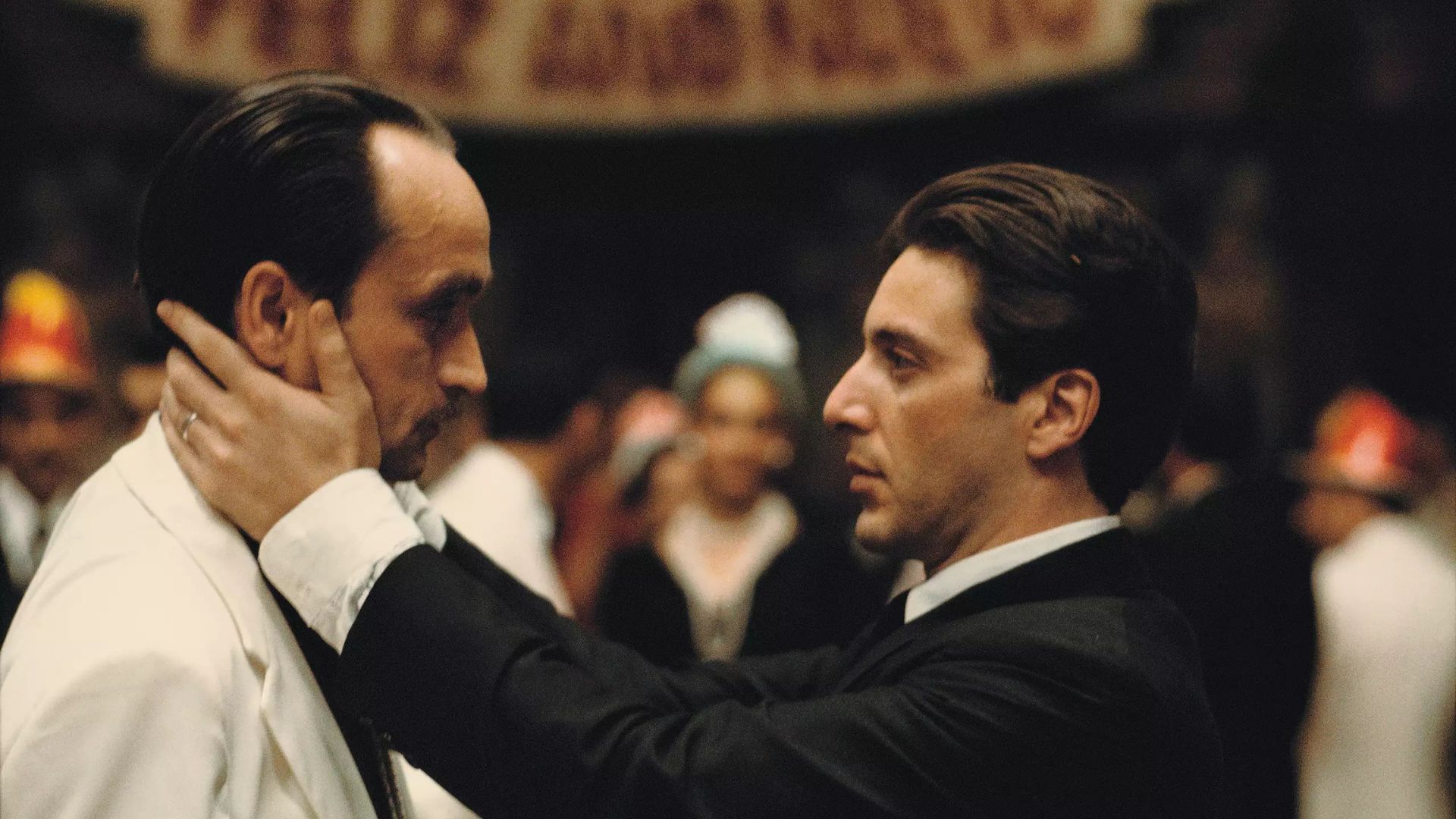
The Full Downtime Procedure
After a module has concluded, and assuming the crew can reach a place of relative safety, perform the following steps:
Restore HP to maximum and pay surviving crew members. The Warden may call for rolls and/or make rulings to cover unusual payouts. For example, an alien artifact may need an Intellect check to determine the time to sell and sale price achieved.
Perform any number of the following; Shore Leave (Warden determines what classes of Port are available), Buy/sell equipment (Warden determines if anything is hard to obtain), Medical Treatment (Warden can rule on procedures not covered by the PSG), Skill training (all costs are paid upfront).
Advance in-game time by 1d10 months. Each player rolls on the Life Event table.
Start a new module* or return to step 3 unless a character is in Debt. At the Warden’s discretion, some or all of the opportunities in step 2 may also be available.
Making Alternate Mothership Classes

Generating playtest material for an existing game can often simply involve deriving the designer’s framework and then iterating on it.
After a first run at a Mothership campaign last year (commencing with Lair of the Space Lamb) I’m gearing up for another one later this summer. As before, this will be a “semi-open table” based around pre-written modules (including a couple of my own, but the starter will be Norgad’s recently released Brackish).
Unlike last year, there will be some effort to create a loose narrative framework — but that’s a subject for another blog post. I’ve written some alternate Panic Tables, sketched out a couple of small modules and but today I’ve decided to broaden the character classes on offer.
But why?
It continues to surprise me that there’s relatively little hacking/expanding of the Mothership system itself, in contrast to the vast number of excellent, imaginative modules (both first and third party). There have been some examples of this sort of thing of course, such as Octopus Ink’s Rimward Classes (which I’ll likely also offer as an option to my players).
But more than that, I find this sort of exercise helps me understand why design decisions were made, which in turn sharpens my own abilities. This is why I use the word expanding rather than hacking — all of this is intended to work with, adding options to Mothership rather than replacing or changing parts of it.
Anyway, onto the classes!
Biologics
Clones and other flesh constructs. Rarer than Androids, there is nevertheless a demand for carefully grown and calibrated organic sentience. This might be for security reasons, an environment uniquely hostile to mechanical lifeforms or concerns related to [REDACTED – MONARCH PROTOCOL].
+10 to all stats // +1 Max Wounds
Trauma Response: Whenever you fail a body save or take a wound, all close friendly players make a sanity save.
Skills: 1 Expert Skill and a Trained Skill prerequisite. Bonus: 2 Trained Skills
Both Dune and Mickey 17 got me thinking about this, in addition to Gradient Descent. I wanted it to be more general than just “clone” and allow different players to put their own spin on it similar to the Android anti-canon approach. They benefit from increased toughness due to being ‘improved’ over random natural evolution… but that means their reactions (or suddenly visible innards) add a layer of visceral horror to anyone seeing them harmed.
They are deliberately kept as all-rounders (created for a specific purpose) with open skills and high stats… but low saves. We might assume they are naïve and inexperienced, or even expendable…

(Despite being cyberpunk, Netrunner is an overlooked source of potential Mothership inspiration)
Colonists
Some would describe these hardy folks as the true backbone of space. To them, often going years at a time between resupply ships, community is everything. They are farmers, explorers and settlers who are used to making the best of things.
+10 to 2 stats // +10 to 1 save // +1 Max Wounds
Trauma Response: Whenever a close friendly player panics, gain 2 stress.
Skills: Botany, Wilderness Survival. Bonus: 2 Trained Skills
If the teamster is focused around the industrialisation of space, then we have a gap both in the fiction and skill tree for those settling it. I suspect the focus towards the former was to emphasise the hunger for resources by megacorps — with the implication that there are billions of humans off-screen in crowded conditions, separate from the frontier of the Rim.
Hardiness and self-sufficiency gets them an extra wound, similar to Marines but without the combat focus. Everything else is kept fairly general as they won’t achieve the all-rounder stat/save heights of the Teamster, but can still specialise and rely on being tough. Since they’re relying on those around them, they get stressed out as panic spreads through the group. They’re one step away from a space peasant mob after all…
 Doctor Who Project: The Krotons – Movement Point
Doctor Who Project: The Krotons – Movement Point
(Variations on These Guys turn up in every other classic Dr Who story)
Dealer
While Teamsters are the actual labour force of space, there is a smaller group who trade, organise and handle logistics. These are the merchants, the negotiators and the information brokers. Their confidence and informal leadership is useful, until it fails.
+10 Intellect // +20 Fear Save // +10 to 1 Stat
Trauma Response: Whenever you critically fail a check or save, all close friendly players make a panic check.
Skills: Rimwise, Linguistics. Bonus: 1 Expert Skill OR 2 Trained Skills
I played around with various ideas for ‘Executive’ or ‘Officer’, since both feature in Aliens. Ultimately though, I decided that in a world of freelancer characters things should remain less formal (and you can still start with the Command skill by putting a specific flavour on the Scientist). As such, the Scientist is the closest comparison here – a boost to Fear Save is powerful, so I didn’t give them much else and held back on the skills.
The leadership aspect (in the absence of defined skills) then emerges by being more likely to be unafraid, but also trigger a response when they seem to be really struggling. This might need to be just stats or just saves — we’ll find out in playtesting!
 Characters in Star Trek: Deep Space Nine - Quark's Bar
Characters in Star Trek: Deep Space Nine - Quark's Bar
(Still the best example even though it doesn’t work for a human only setting)
Voidborn
Those that have lived their whole lives on ships, stations and asteroids are already starting to diverge from the rest of humanity. This natural adaptation leaves them mentally resilient in the vast darkness, but lacking physical power.
+15 Speed // -10 Strength // +15 Sanity Save // +15 Fear Save
Trauma Response: Advantage on panic checks in spaceships. Disadvantage when on a planetary surface.
Skills: Zero-G. Bonus: 1 Trained Skill and 2 Expert Skills
The Expanse inspiration is pretty straightforward here. Leaning on the long-term effects of reduced gravity feels appropriate in Mothership’s hard sci-fi universe, while the implied evolution/change also fits the horror themes (even if they’re simply another route towards exploitation by those in power). Mechanically, none of the original classes get a speed boost, so that seemed a logical step, as did reducing strength. Boosting saves and skills is perhaps overpowered, but I like the idea of them being educated/experienced due to a hostile environment. The trauma response then fully leans into this idea of a glass cannon - depending on the twists and turns of a campaign, your character might be a penalised or gain a benefit from module to module. Note that space stations and asteroids are intended to give no advantage or disadvantage — a classic example of where you realise just how hard it is to frame rules with a succinct character sheet.